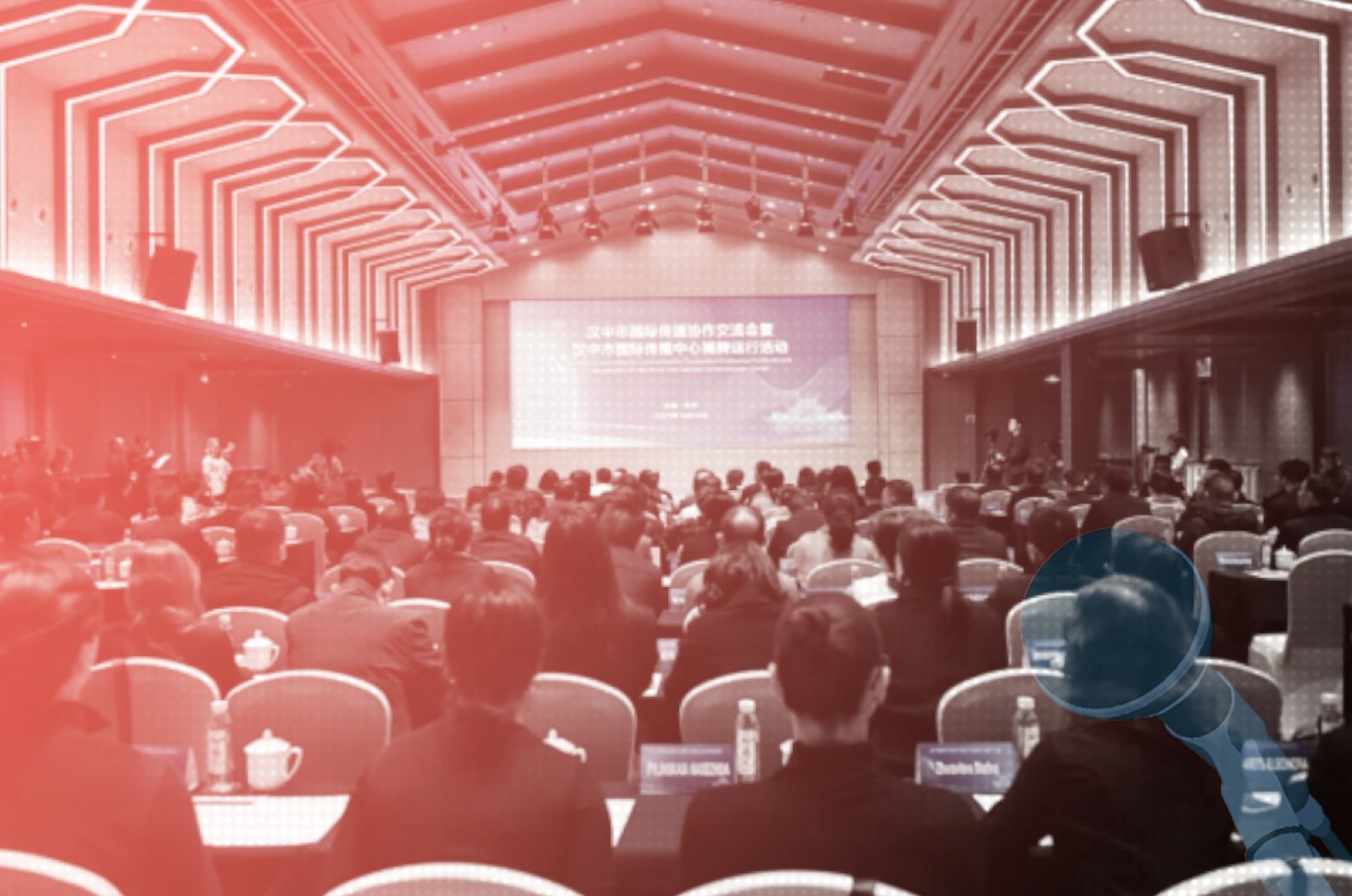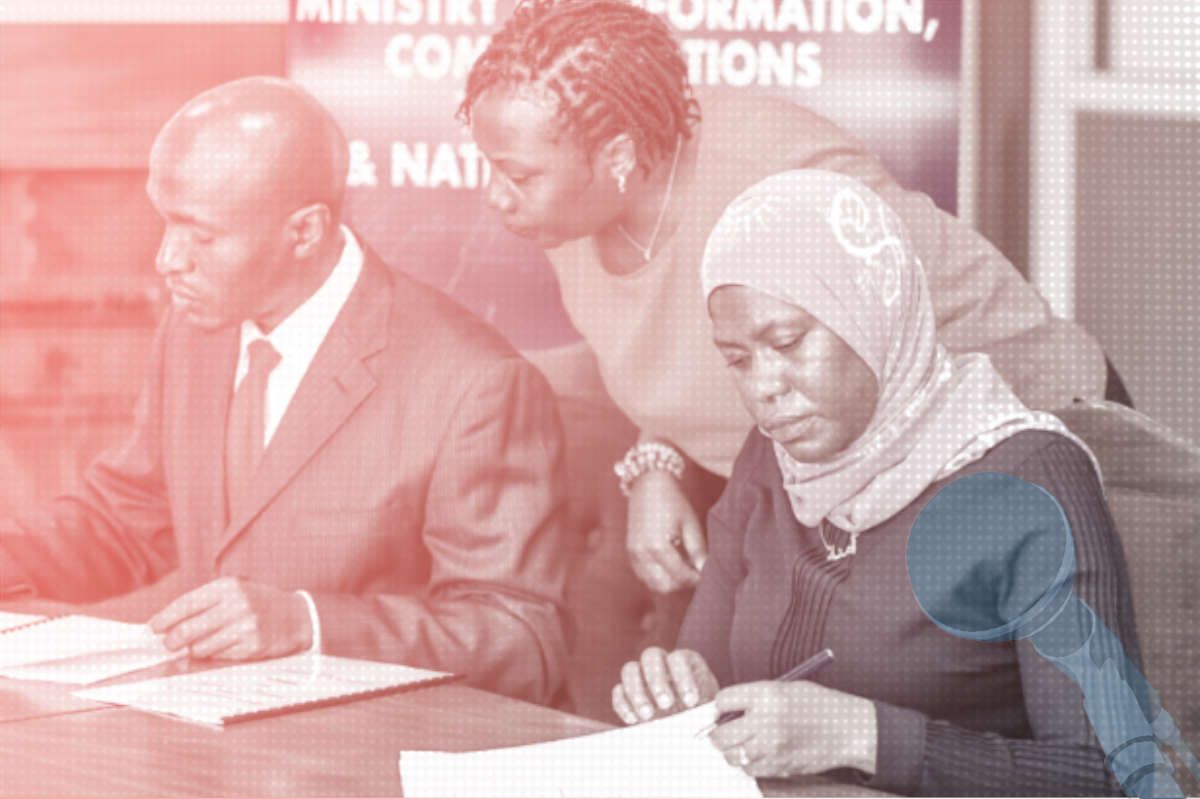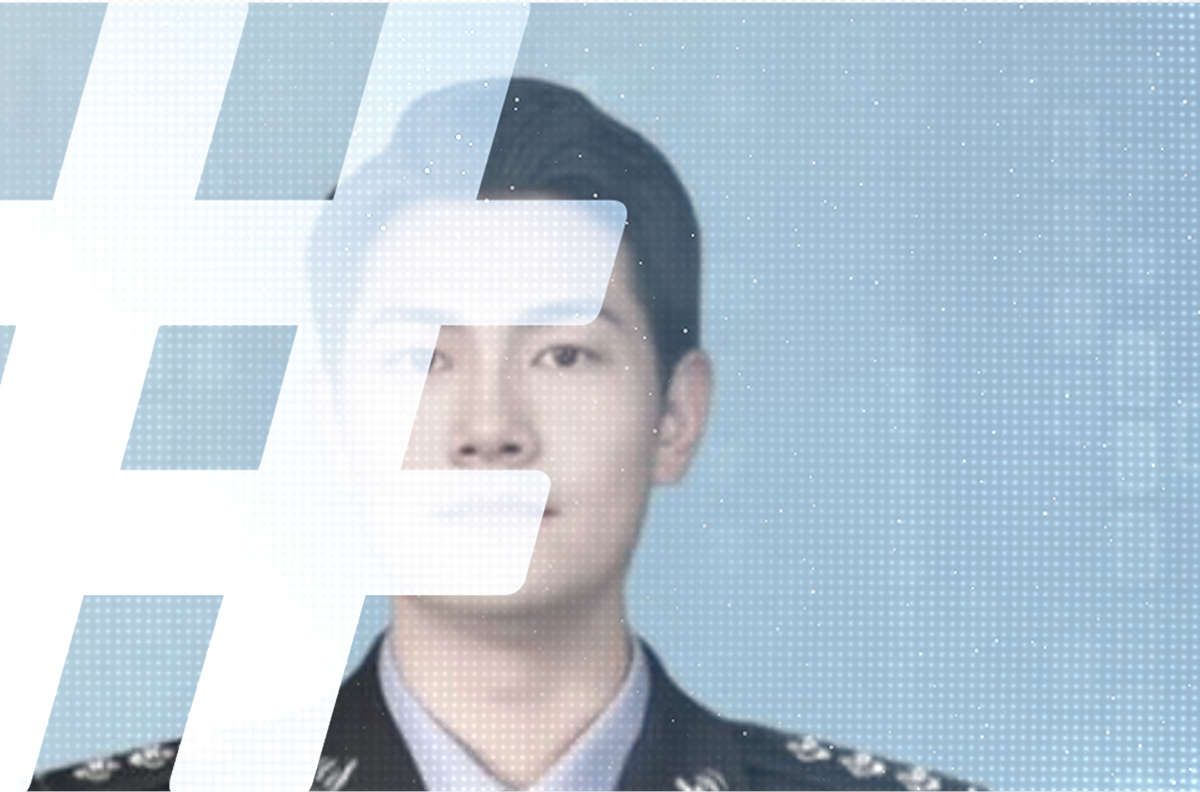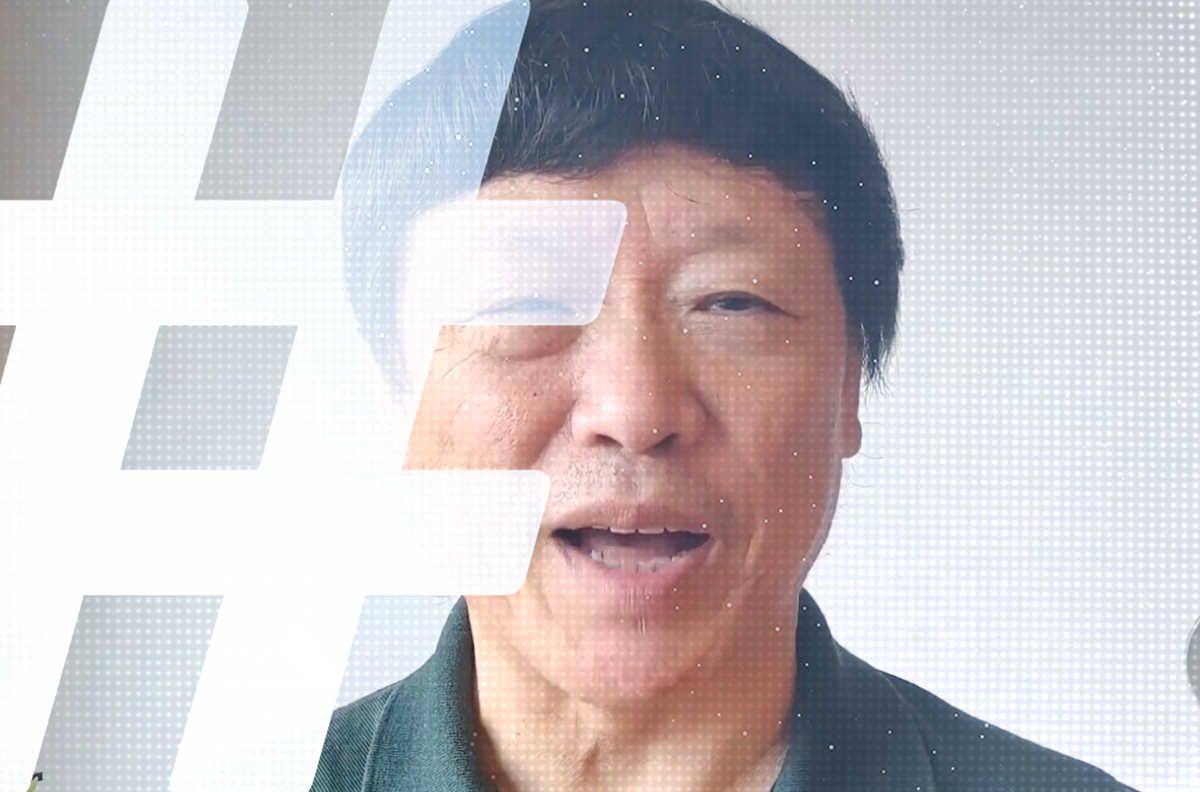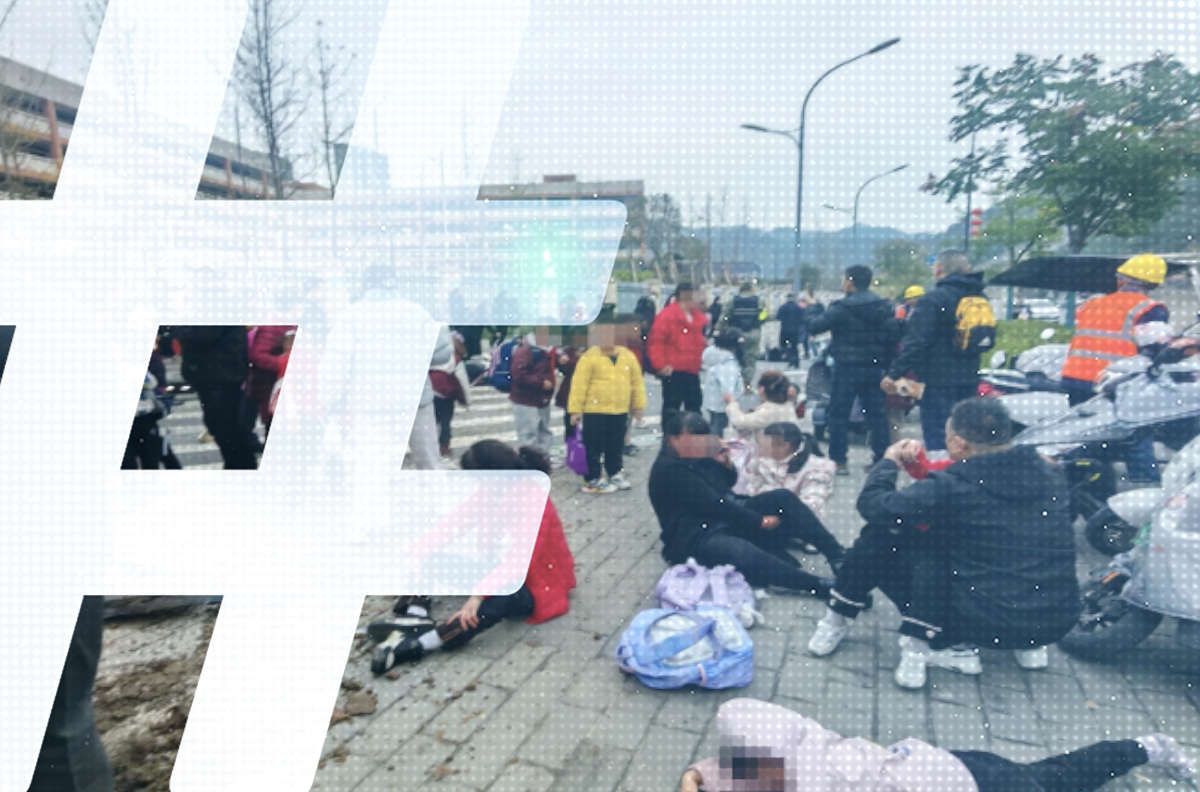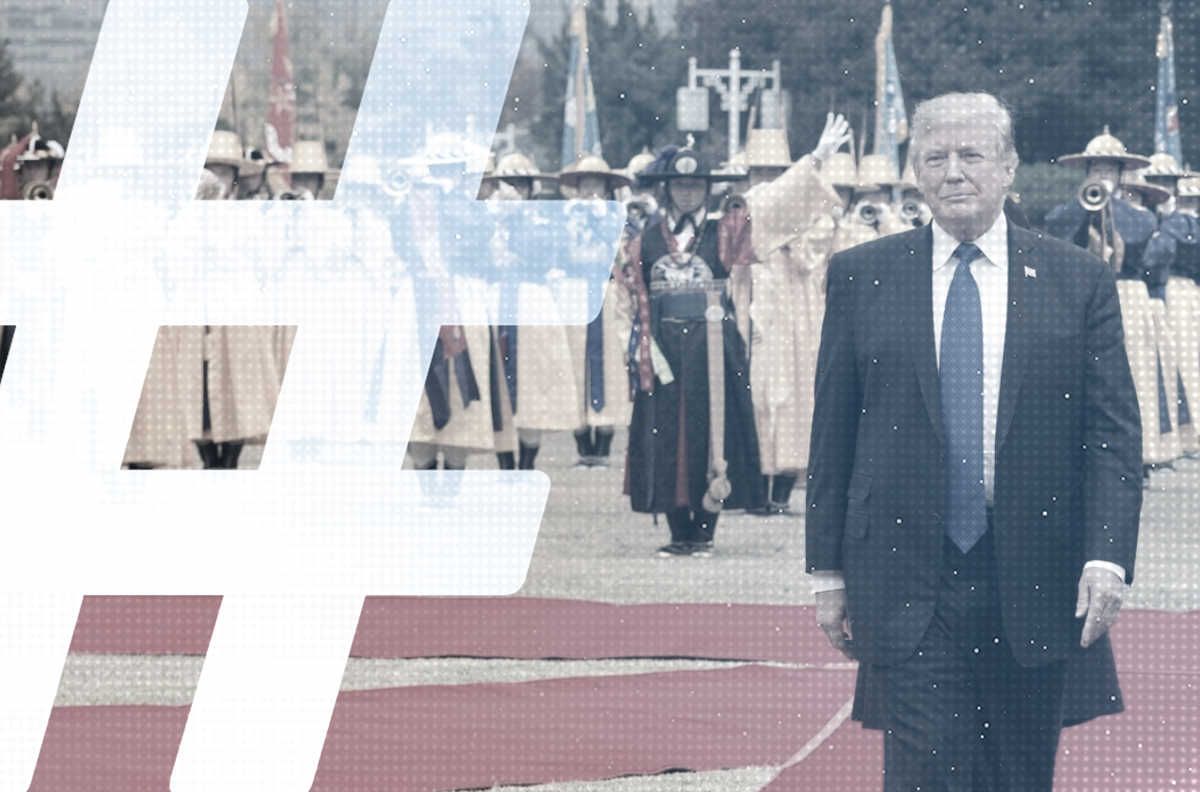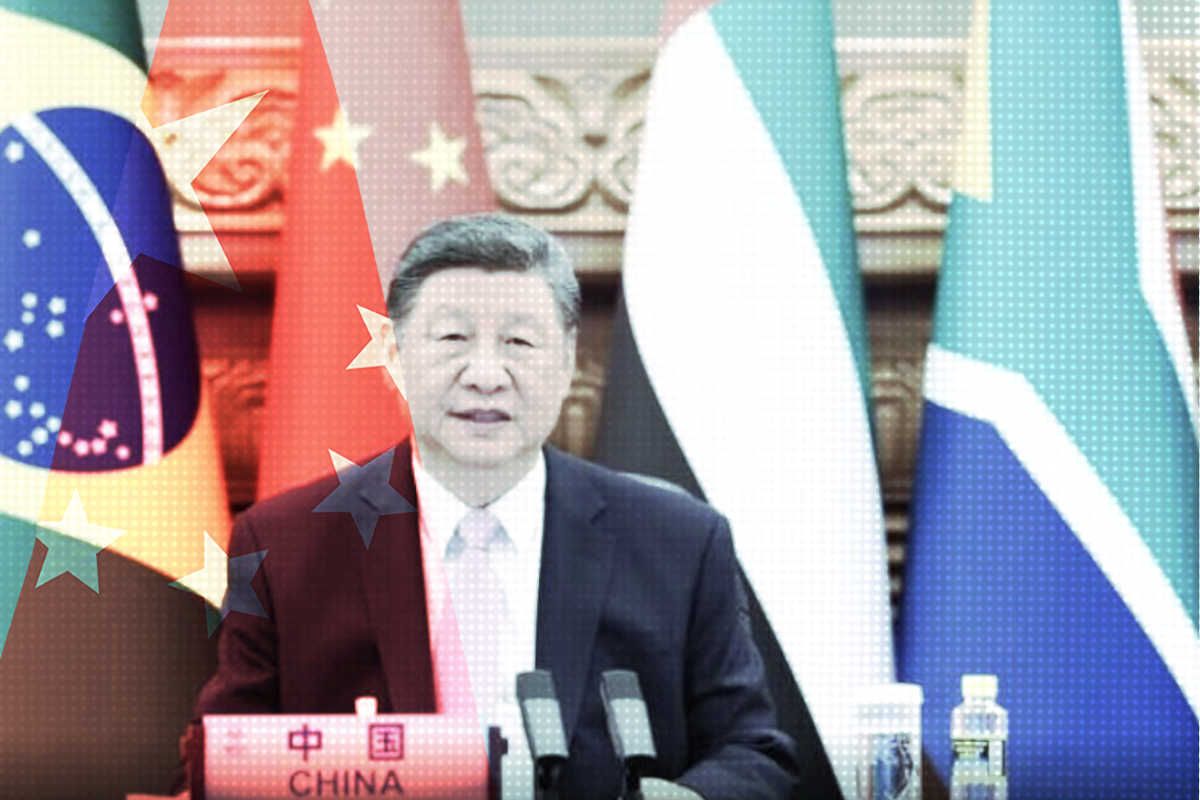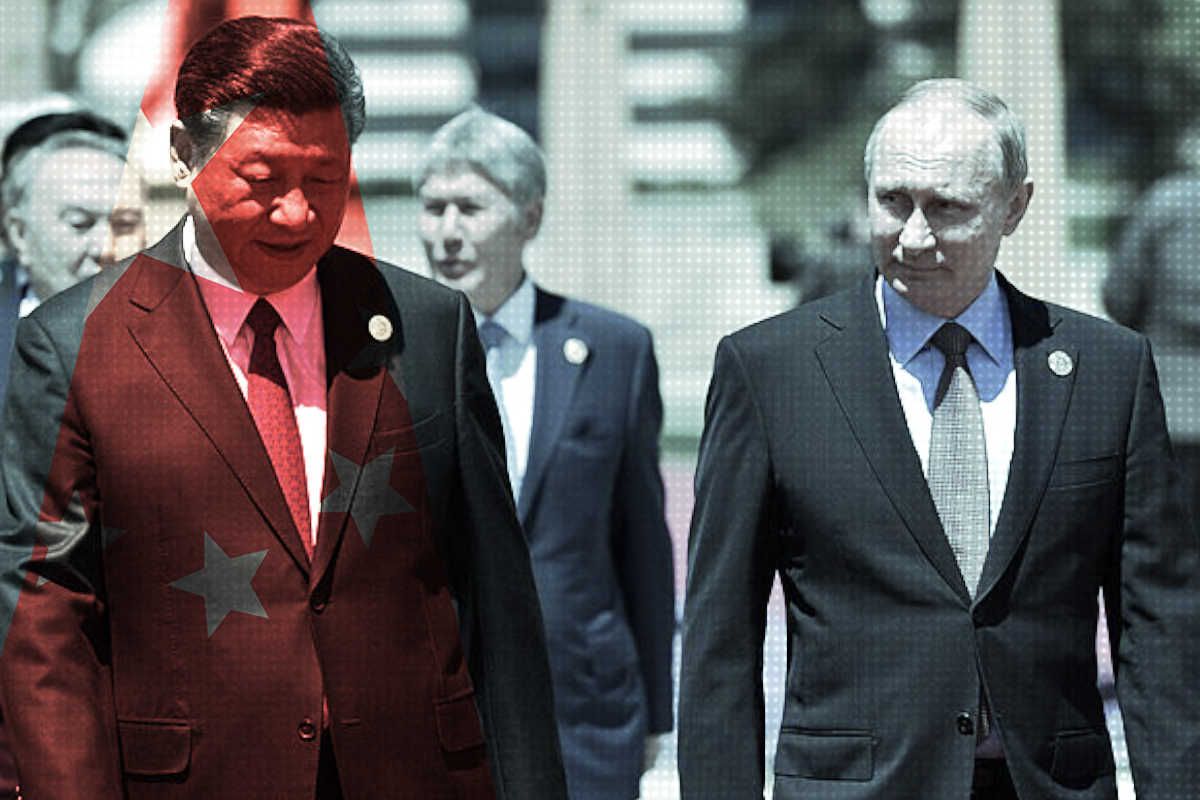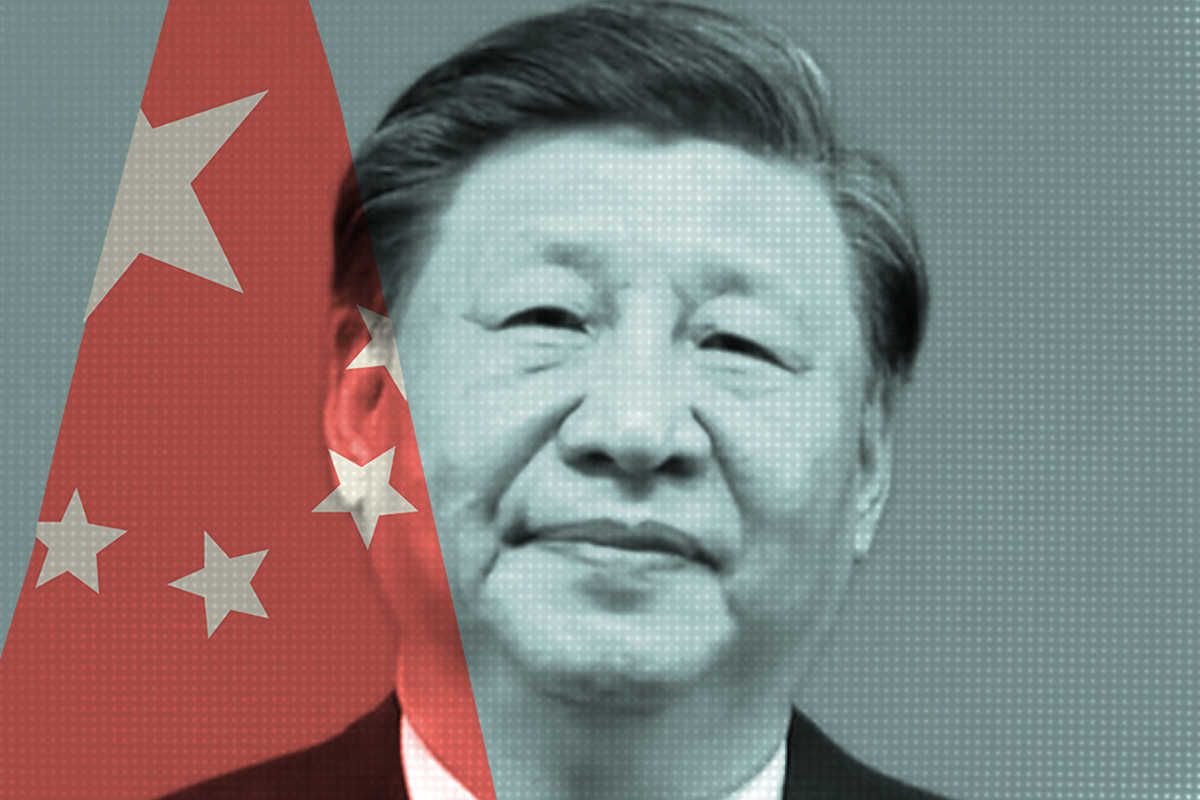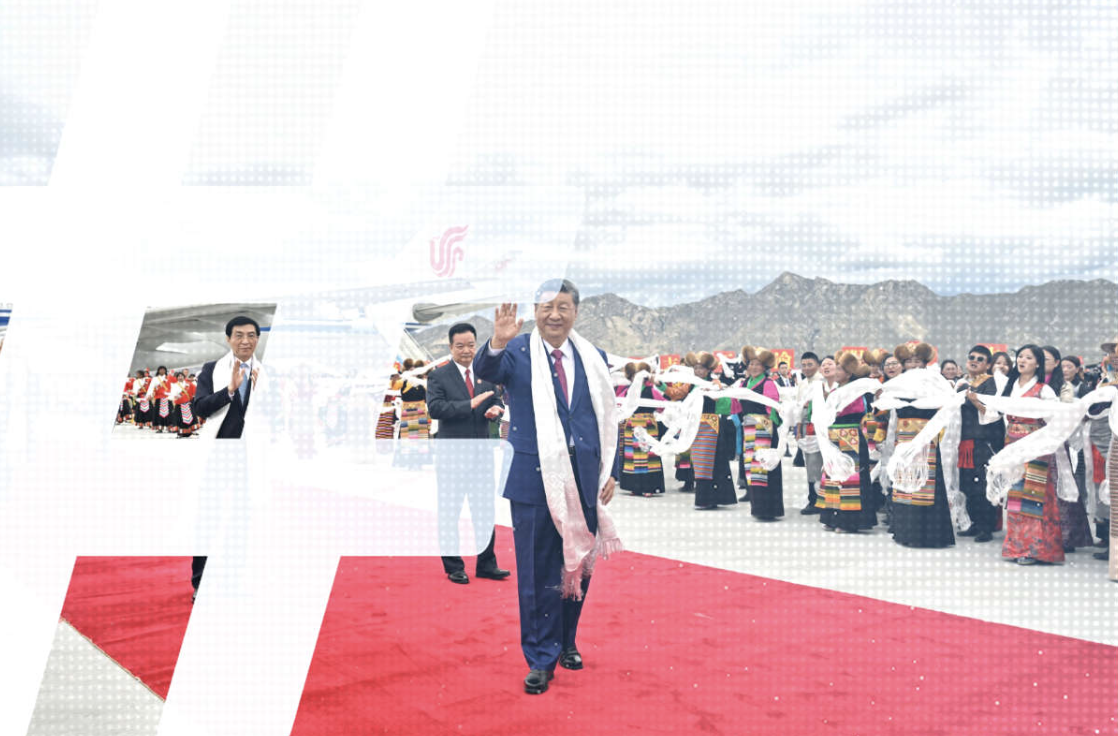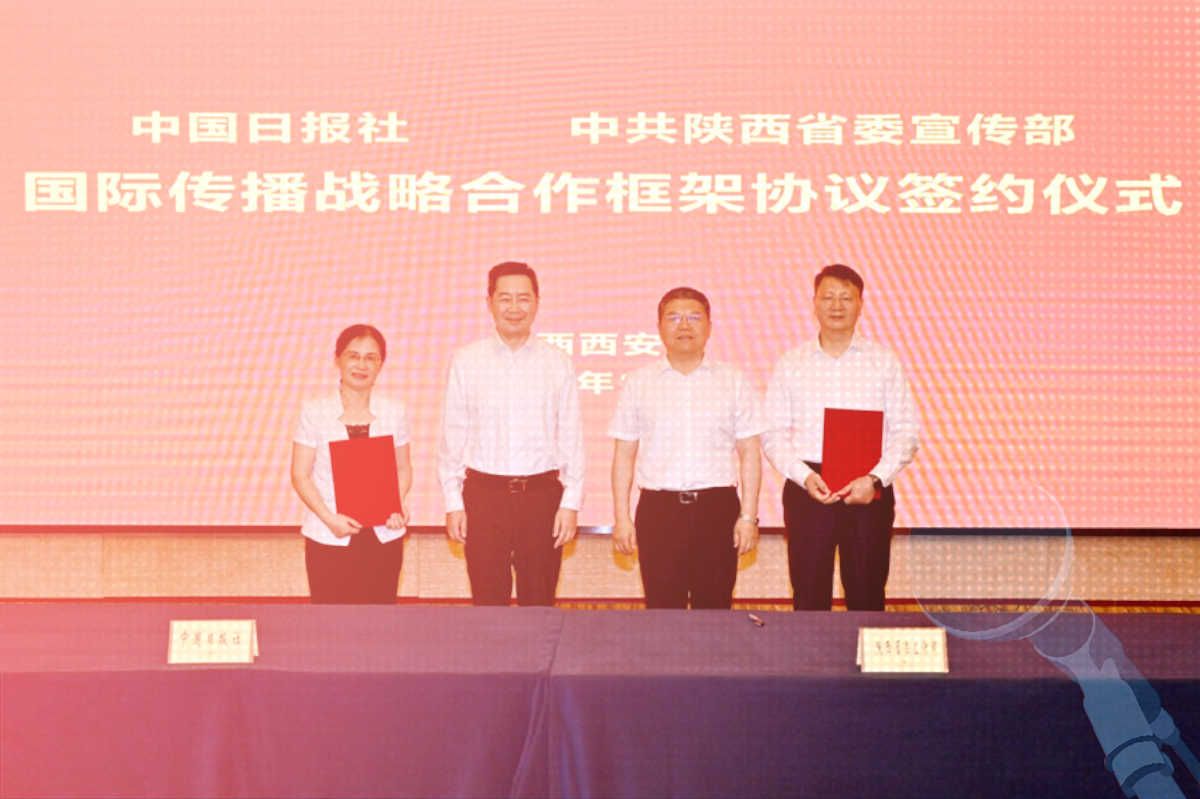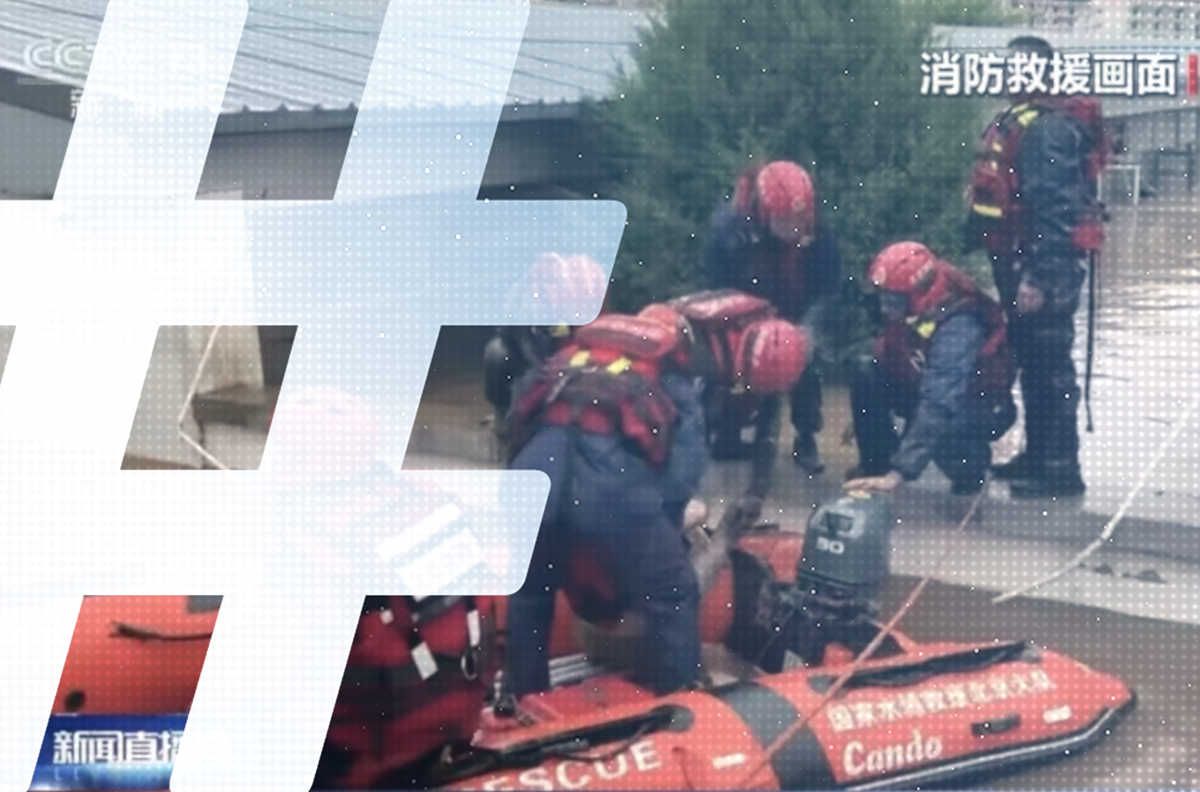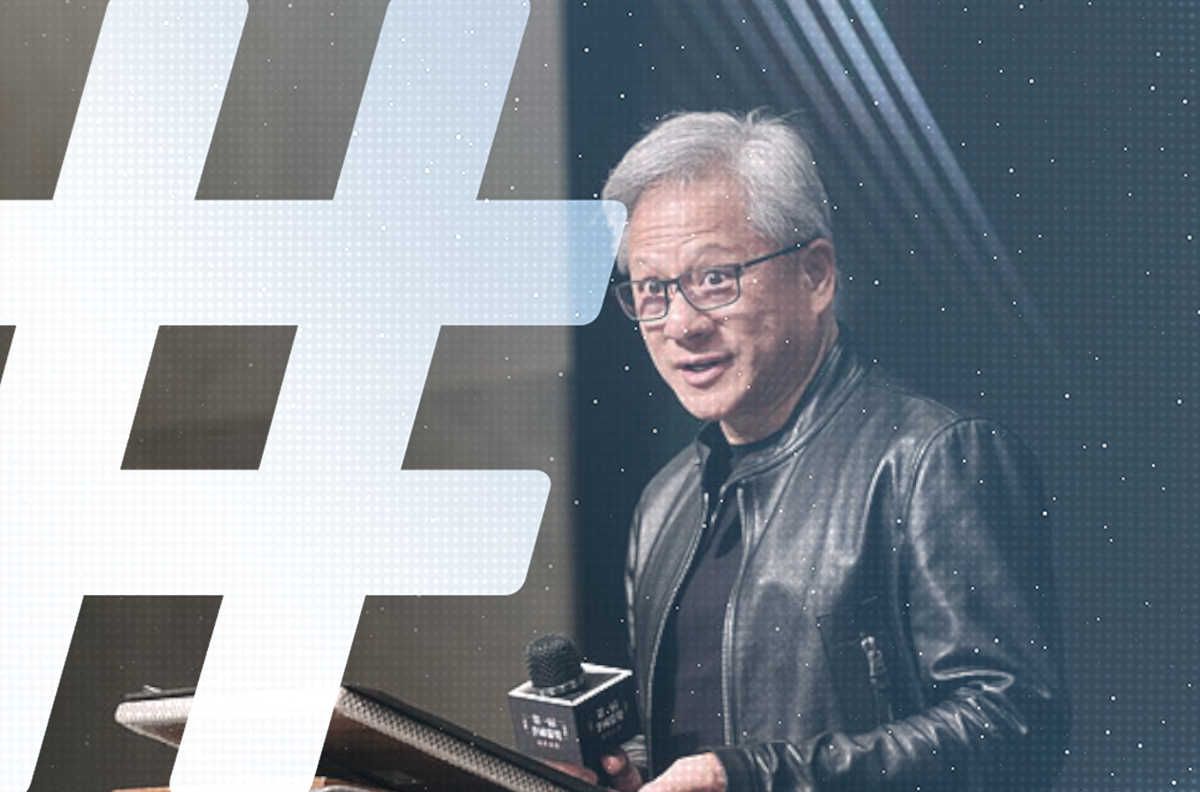
Local officials announce the launch in May 2024 of the Nanning International Communication Center, one of a growing number of ICCs across China tasked with revolutionizing the country’s global propaganda.
Since the beginning of Xi Jinping’s “New Era,” confrontation has been at the heart of the Chinese Communist Party’s understanding of global information and communication. In his first major speech on propaganda policy in August 2013, Xi referred to the need for CCP victory in the “public opinion struggle” (舆论斗争), a phrase that for many bore uncomfortable shades of the disastrous pre-reform era. The “struggle,” he made clear, was about raising China’s voice — the Party’s voice — over that of the West, a challenge state media have steadily called “a smokeless war.”
Over the past three years, however, China’s steely determination to remake global public opinion, and to enlist the whole of Chinese society to do so, has been delivered with another conflict term: total war.
The term’s use in the context of the CCP’s international communication since 2022 speaks to how thoroughly the leadership’s strategy in this arena has changed — from the centralized propagation of narratives through high-level state media and ministries, to a multi-layered and multi-local approach that involves, well, everyone.
While that all-in approach is being touted as the strategy’s strength, it may also prove its fatal weakness.
A Smokeless War for All
The concept of “total war” (总体战), which refers to conflict in which combatants use any and all means necessary to achieve victory, was first coined by a Prussian military strategist in the late 19th century and later was associated closely with the Nazi war effort. In a contemporary CCP context, the term first appeared in Xi Jinping’s February 3, 2020, speech on the government’s response to the Covid pandemic at home.
From that point on, “total war” appeared constantly in the state media. In a clear sign, however, that Chinese leaders were mindful of its provocative historical overtones, the term was mysteriously absent from Xi’s speech to the G20 Summit in late March 2020. CMP founder Qian Gang surmised at the time that Xi’s speech writer had recognized the seriousness of the phrase, understanding that while “total war” sounded resolute to China’s leaders, it was unacceptable in an open global context.
By the end of 2021, as the leadership’s unpopular “zero Covid” policy persisted, “total war” had slipped into the official discourse on information policy too. Winning the “total war” against the pandemic required drumming up public support for the effort, emphasizing positives and playing down criticism.
Then, in a speech nearly three years ago to set out the goals for the powerful CCP-run China Media Group (CMG), Shen Haixiong (慎海雄), the group’s president and a top CCP propaganda official, borrowed the full phrase used by Xi to refer to the anti-Covid effort, applying it to global communication. China, he said, was “fighting an active war, a sustained war and a total war (总体战) in the struggle for international public opinion.”
China’s “smokeless war” is now a total war, demanding the involvement of the entire Chinese media ecosystem, of the entire bureaucracy, and of the entire society. The term, in fact, might be more appropriate to describe the full array of tactics and players now involved than that catchall generally favored (and often misapplied) by outside analysts: the United Front.
Since Shen’s speech applying Xi’s resolute anti-Covid war metaphors directly to international communication, the CCP has pushed, right from the center, a total restructuring of global propaganda. The mobilizing of the full resources of society, the essence of total war, can be clearly seen in how local authorities, leveraging the media assets under their jurisdictions, have rushed to establish a new nationwide network of international communication centers (ICCs). These are tasked — from the county level on up to the provincial level — with “telling China’s story well” through initiatives directed outward. At CMP, we have called this strategy “centralization+” to reflect how multi-local forces have been unleashed even as vertical integration (including with central state media) remains strong.
Though emerging in 2018 with the formation of a pilot center in Chongqing, China’s ICCs today look very much like a product of the whole of state and society approach that characterized China’s response to the pandemic. Since 2022, the year of Shen’s “total war” address at the China Media Group, ICCs have sprung up across the country, at every bureaucratic level. 2024 brought a boom in sub-provincial cities, counties and districts setting up what state media called “local ICCs” (地方国际传播中心), the numbers almost tripling over the course of the year.
The institutions behind these lower-level ICCs go far beyond just local government and state media. Local universities, museums, publishers, overseas diaspora groups, and local branches of the CCP’s United Front Work Department — the office tasked with fostering allies outside the Party and overseas — are all lending a hand. The ICC system is now employing a wide array of actors inside and outside the political system in its battle to win the hearts and minds of foreign audiences. In the same way “total war” demands the mobilization of all resources to defeat a country’s enemies, this approach demands that all groups contribute to the cause — a kind of “total propaganda.”
Smelting Furnaces for China’s Voice
In recent weeks, the examples of extreme localization of the central strategy for global communication have emerged in quick succession. On December 6, the Guangzhou Daily Newspaper Group, operated by the city-level CCP leadership, established an in-house ICC. Alongside newspaper staff and officials from the municipal propaganda department, representatives from Guangzhou’s United Front Work Department and five local universities banded together to launch the project. These academic partners, according to the event’s readout, will help build a system of research labs for international communication, and also hire foreign students as “Guangzhou communication officers” (广州传播官).
China’s “smokeless war” is now a total war, demanding the involvement of the entire Chinese media ecosystem.
As we have noted previously in our coverage of China’s treatment of foreign students as propaganda resources, this tactic raises serious ethical issues, not just about the priorities of Chinese higher education but about the integrity of academic exchanges.
The ceremony in Guangzhou also included regional and overseas Chinese outlets. Present for the event were staff from the Hong Kong-based Sing Tao Daily (星岛日报), a pro-CCP newspaper that prints overseas editions for Chinese communities in North America and Europe. According to local media reports, Indonesia’s Chinese-language Xunbao (讯报) newspaper phoned in to offer congratulations, alongside diaspora business groups like the Association of Chinese-Owned Enterprises in North Malaysia (北马中资企业协会). Each pledged to share their resources and play to each other’s strengths in “telling China’s story.”
The day after the Guangzhou event, a similar coalition of institutions assembled in Yan’an, the CCP’s wartime base in northwestern China now regarded as hallowed political ground, to launch a new “international communication base” (国际传播基地) for “red culture” (红色文化), a reference to the sanitized and glorified history of the Communist Party. At the launch, the director of a local museum reviewed the wartime reporting of American journalist Edgar Snow, regarded today by the CCP as the model of foreign reporting on China: full of positives about the Party and its leaders.
How will the base spread “red culture” internationally? Two major state-owned publishing houses have reportedly signed cooperation agreements with the local Xi’an International Studies University, which will publish works written by foreigners during the Yan’an period (1935-1947), to be translated into multiple languages. State-backed books on Yan’an are unlikely to electrify global Gen-Z audiences — a key focus at present of China’s external communication efforts. But such efforts underscore the diverse groups now involved in the CCP’s international communication push. Universities, publishing houses, local media, museums: All are pooling resources under the banner of ICCs in order to heed Xi Jinping’s call for a revolution in China’s global image.
As it has accelerated nationwide, the process has resulted in awkward, even comical, gaps between what is practical and effective policy on international communication and what seems to be sheer performative nonsense.
Recently, on Christmas Day, two districts in the city of Ningbo also received ICCs. A propaganda official in one of the districts, Haishu (海曙), called the opening “a new chapter in Haishu's international communication work.” Two days later, Hangzhou’s Linping District held a marquee event to unveil its own ICC, centering its global communication strategy on the notion of “Linping Style,” to be promoted through online and offline activities. By our latest count, this brings the total number of ICCs in Zhejiang province alone up to 23.
As the total war approach becomes policy from the top, talk of going global — though not exactly global thinking — is reaching fever pitch. The fixation on international communication can be seen everywhere, even outside the ICCs that form the backbone of the emerging new national system. On December 11, the Zhejiang Provincial Journalists Association (浙江省记协), a chapter of the CCP-run All-China Journalists Association (ACJA), launched a special professional committee (专业委员会) to advise on improving international communication across the province’s entire media system.
Certainly, savvier regional ICCs (Shanghai and Chongqing spring to mind) should be watched closely for both overt and covert global communication efforts that make use of social media platforms, and harness trends like AI. Efforts directed at influencers in Taiwan, largely coordinated by provincial media groups in Fujian province, and including an array of local actors, have dominated headlines in the country in recent weeks — leaving Taiwanese alert and on edge over what are being broadbrushed as “united front” efforts stemming from China.
And yet, a familiar pattern of waste is also already becoming apparent, as officials across the country clamor to make Xi Jinping’s vision of whole-society message mobilization a reality. This week, Heilongjiang launched its fourth provincial-level ICC in the capital city of Jilin, the "International Communication Center for Northeast China Tiger and Leopard Culture.” The ICC will reportedly spend millions of dollars on new equipment, including infrared-triggered wildlife cameras, to monitor the area’s population of around 70 wild Siberian tigers and 80 Amur leopards. Great news for tigers, perhaps. But for China’s international communication? According to state media coverage of the launch, the new center will “carry out content creation and development” to "build up a diversified, three-dimensional pattern of international communication.”
As most media professionals know only too well, effective communication requires a keen understanding not just of platforms and technologies, but of audiences and their needs and interests. China’s “total war” for international communication has encouraged local and regional leaders to push far and fast beyond such practical concerns in the pursuit of political expediency. Many of these local ICCs are destined to become the backyard furnaces of global communication — a grand vision ending in total, wasteful foolishness.


